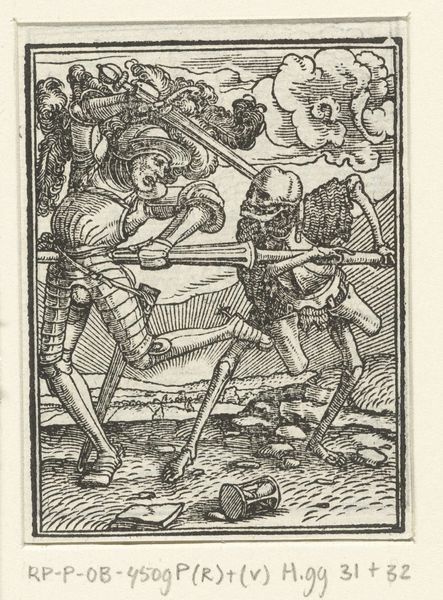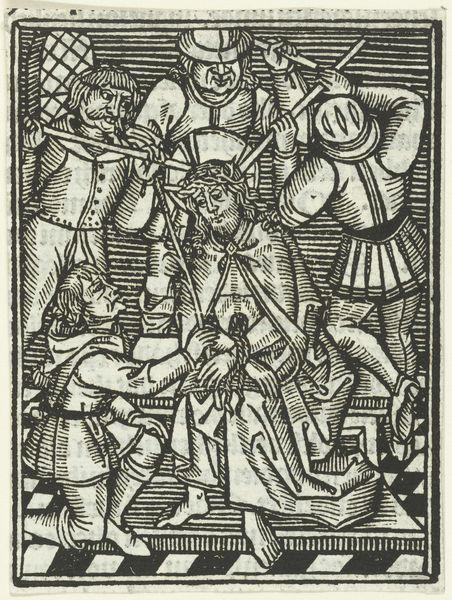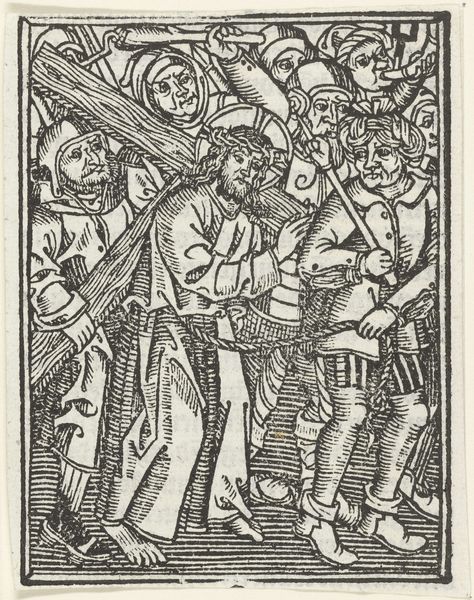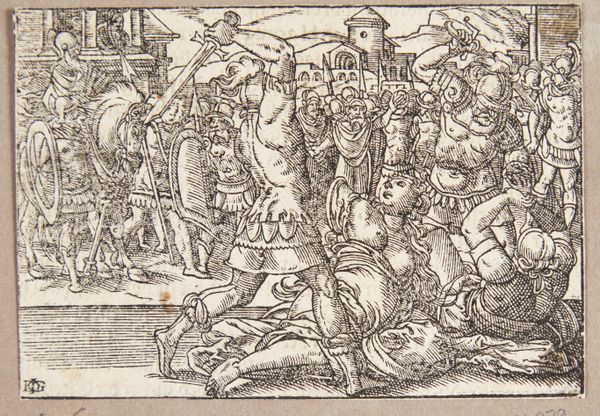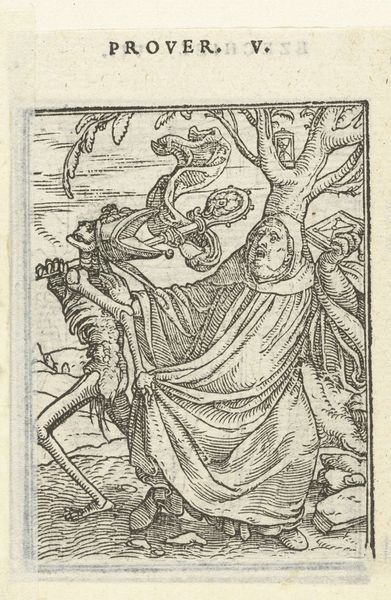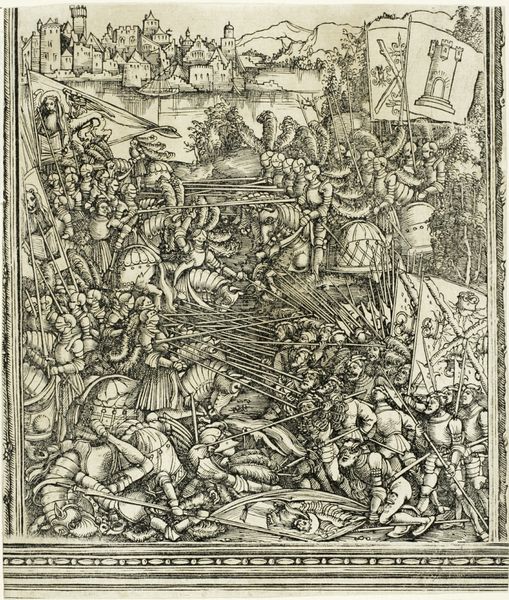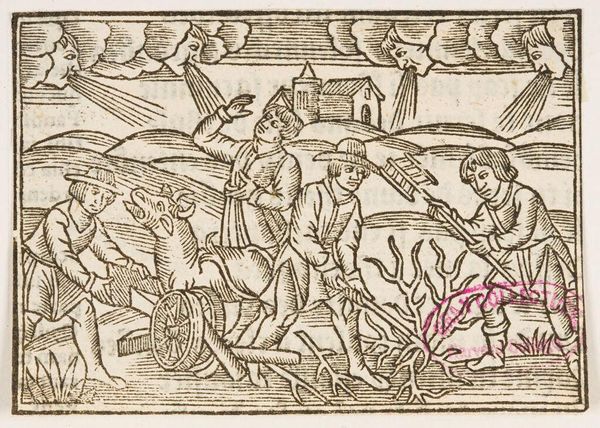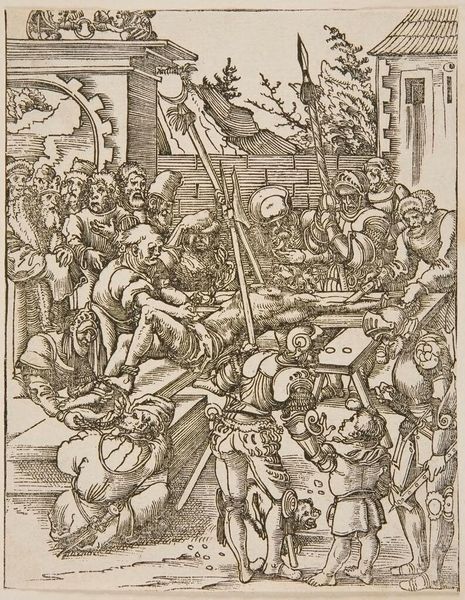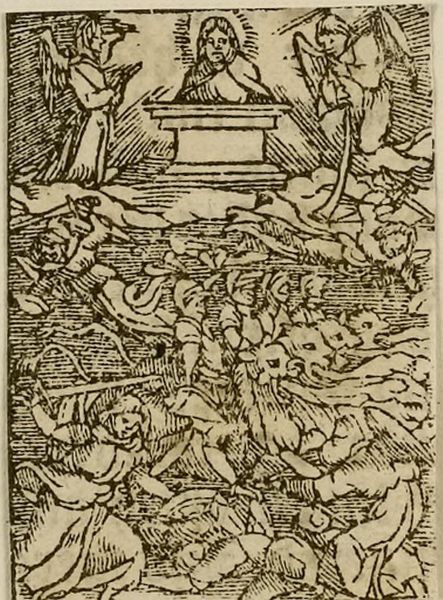
print, woodcut
#
medieval
#
narrative-art
# print
#
figuration
#
woodcut
#
history-painting
#
northern-renaissance
Dimensions: height 90 mm, width 68 mm
Copyright: Rijks Museum: Open Domain
Curator: Allow me to introduce "Christus wordt aan het kruis genageld," a woodcut attributed to the Master of the Delbecq-Schreiber Passion, dating from around 1490 to 1503. Editor: Whew, talk about stark! The harsh lines practically scream. It’s claustrophobic, almost crude in its depiction of violence. Makes you wince, doesn’t it? Curator: The image relies heavily on line work, typical of the woodcut technique, to delineate forms and create a sense of depth. The composition, while dense, directs the eye to the central figure of Christ. Editor: Central, yes, and undeniably suffering. But it's fascinating how the expressions of the men hammering away—a mix of grim determination and utter indifference—contribute to the horror. There’s this emotional flatness that’s deeply unsettling, even alienating. It leaves you feeling disconnected from any sort of easy empathy. Curator: Precisely. The lack of idealization in the figures is characteristic of the Northern Renaissance. The print serves as both a narrative scene of a crucial moment of biblical history, and a formal study in the distribution of mass and void. Editor: It’s like looking at the blueprints for tragedy. Each stroke serves a function—hammer blow, contorted limb, vacant stare. The cross itself feels less like a symbol and more like lumber being awkwardly assembled. The high contrast emphasizes this relentless and brutal physicality. Curator: Indeed. Its aesthetic power emerges precisely from the calculated interplay between devotion, technical proficiency, and unflinching visual account. Editor: And it all leads back to that haunting void, that absence of easy redemption. Leaves you cold, yet utterly riveted. Curator: A sentiment I believe encapsulates much of the Northern Renaissance's exploration of spirituality, mortality, and its aesthetic consequences.
Comments
No comments
Be the first to comment and join the conversation on the ultimate creative platform.
